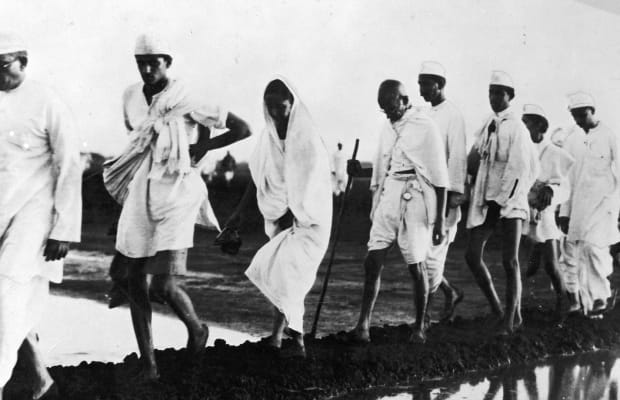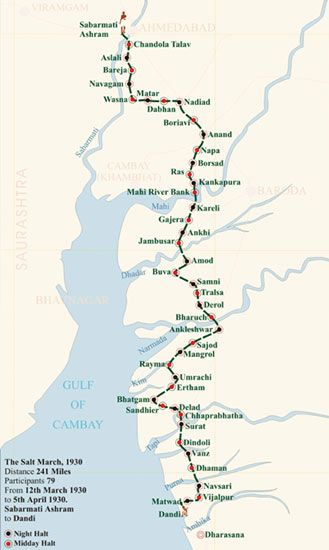
Gandhi and his followers harvesting salt (Image credit, Getty Images).
Civil Disobedience
Mohandas Gandhi believed in non-violence, so he performed the acts of civil disobedience, like burning clothes made by the British and making home-spun clothes. These simple acts led to thousands of Indians joining in the fight to end the British rule. He also led peaceful protests, which led to thousands of arrests, but he did not give up, and soon he walked the Salt March.
" The first principle of non-violent action is that of non-cooperation with everything humiliating."
- Gandhi, Non-Violence in Peace and War, volume 1 (Lambilly, p. 58)
